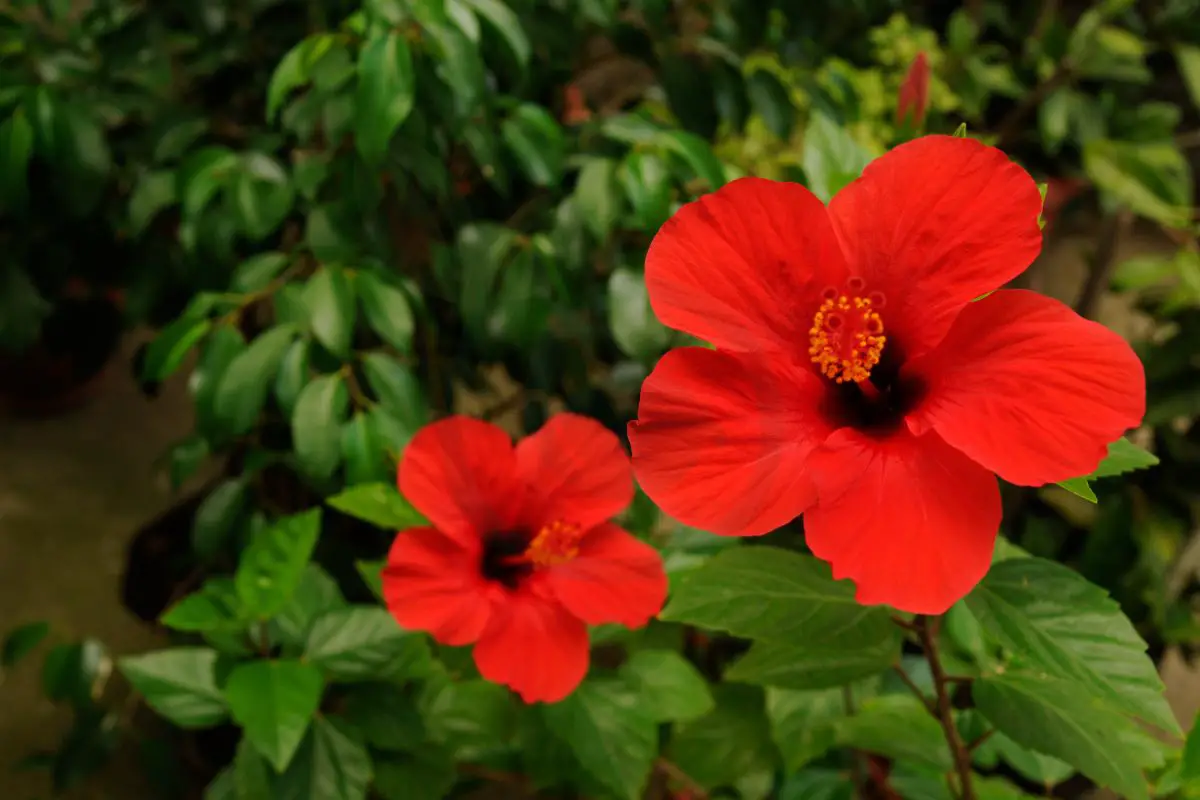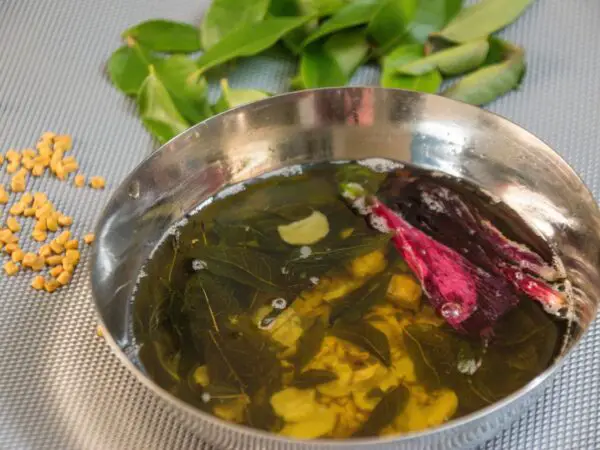Wondering how hibiscus reproduce? From pollination to seed formation, understanding this process can help you care for your hibiscus plants better.
Curious about the intricate details of hibiscus reproduction? We'll explore the various methods hibiscus use, including budding and grafting, to reproduce, shedding light on their unique reproductive strategies. Stay tuned to uncover the secrets behind hibiscus propagation and ensure your plants thrive.
Excited to learn more about the enchanting world of hibiscus reproduction? Discover expert tips and insights that will deepen your knowledge and enhance your gardening skills. Get ready to become a hibiscus reproduction pro!
Key Takeaways
- Understanding the flower structure and pollination process of hibiscus is crucial for successful reproduction.
- Implement proper growing conditions to support healthy hibiscus reproduction, such as adequate sunlight and well-draining soil.
- To propagate hibiscus, follow step-by-step techniques like seed formation and dispersal or asexual reproduction methods.
- Overcome challenges in hibiscus reproduction by addressing issues like pests, diseases, or unfavorable environmental conditions.
- By applying the knowledge gained on hibiscus reproduction, enthusiasts can enhance their gardening skills and cultivate thriving hibiscus plants.
- Remember that successful hibiscus reproduction requires a combination of knowledge, care, and patience.
Hibiscus Overview
Plant characteristics
Hibiscus rosa-sinensis is known for its bright, showy flowers and dark green glossy leaves. The plant typically grows up to 15 feet tall, with large trumpet-shaped flowers.
It stands out due to its vibrant colors, including shades of red, pink, yellow, orange, and white. The leathery leaves add to its appeal, making it a popular choice for gardens.
The general appearance of Hibiscus rosa-sinensis includes bushy growth, woody stems, and profuse flowering throughout the year. It thrives in warm climates and requires well-drained soil.
Geographic distribution
Hibiscus rosa-sinensis thrives in tropical and subtropical regions around the world. It can be found in countries like China, Hawaii, India, and Australia.
The plant prefers environments with plenty of sunlight, moderate humidity levels, and consistent rainfall. It grows best in temperatures between 60-90°F.
To successfully grow Hibiscus rosa-sinensis, ensure it receives at least six hours of sunlight daily and protect it from harsh winds and frost.
Varieties
There are several varieties of Hibiscus rosa-sinensis, each with unique characteristics. Popular cultivars include the "Cooperi" with purple foliage, the "Snow Queen" with white blooms, and the "Double Pink" with double-layered petals.
These varieties vary in flower color, size, leaf shape, and growth habits. Some cultivars are prized for their ability to attract butterflies and hummingbirds to the garden.
Gardeners can choose from a wide range of Hibiscus rosa-sinensis cultivars to add color and beauty to their outdoor spaces.
Reproduction Basics
Sexual reproduction
Sexual reproduction in Hibiscus rosa-sinensis involves the fusion of male and female reproductive cells. The process begins with pollination, where pollen from the male part of the flower lands on the stigma of the female part. This leads to fertilization, where the male gametes travel down the style to reach the ovary and fuse with the ovules.
The male reproductive structures in hibiscus are the stamen, which consists of anthers producing pollen grains containing male gametes. On the other hand, the female reproductive structures include the stigma, style, and ovary. The stigma receives pollen, while the style provides a path for pollen tube growth towards the ovary where fertilization occurs.
Genetic crosses play a crucial role in sexual reproduction as they lead to genetic diversity among offspring. Through cross-pollination, different varieties of hibiscus can be bred to create new hybrids with desirable traits such as unique colors or larger blooms.
Asexual reproduction
Asexual reproduction methods in Hibiscus rosa-sinensis include cuttings, where a portion of a healthy plant is removed and grown into a new plant. Another method is layering, where a branch is bent and covered with soil until roots develop, creating a new plant. These methods ensure that offspring are genetically identical to the parent plant.
The advantages of asexual reproduction for hibiscus plants are manifold. It allows for rapid propagation without relying on pollinators or seed formation. It preserves desirable traits without genetic variation since offspring are clones of the parent plant.
Asexual reproduction significantly contributes to the propagation of Hibiscus rosa-sinensis by enabling quick and efficient multiplication of plants with desired characteristics. This method is particularly useful for commercial growers looking to produce large quantities of uniform hibiscus plants for sale or landscaping purposes.
Flower Structure
Petals and colors
The Hibiscus rosa-sinensis flowers showcase a wide array of petal colors and shapes, ranging from vibrant reds to delicate pinks. These variations play a crucial role in attracting pollinators such as bees and butterflies. The bright hues act as visual cues, guiding pollinators towards the nectar-rich center of the flower.
The diverse petal colors not only serve a functional purpose in reproduction but also enhance the overall aesthetic appeal of Hibiscus rosa-sinensis flowers. The striking contrast between the petals and the dark green leaves creates a visually captivating display in gardens and landscapes.
Stamen and pistil
Within the reproductive structure of Hibiscus rosa-sinensis, the stamen and pistil play vital roles in the process of fertilization. The stamen, the male reproductive organ, produces pollen grains containing sperm cells essential for fertilization. On the other hand, the pistil, the female reproductive organ, receives pollen grains and facilitates their journey towards the ovules for fertilization.
The intricate anatomy of these structures ensures successful reproduction in Hibiscus rosa-sinensis plants. The stamen's pollen grains must reach the pistil's stigma for pollination to occur, initiating the fusion of male and female gametes. This process is fundamental for seed formation and genetic diversity within the species.
Pollination Process
Natural pollinators
Insects
- Bees, butterflies, and hummingbirds are common insects that play a crucial role in pollinating Hibiscus rosa-sinensis.
- These insects have a mutualistic relationship with Hibiscus rosa-sinensis plants, benefiting from nectar while inadvertently transferring pollen.
- Insects contribute significantly to the reproductive success of Hibiscus rosa-sinensis by facilitating cross-pollination between flowers.
Birds
- Birds, especially sunbirds and hummingbirds, are essential in pollinating Hibiscus rosa-sinensis due to their long beaks ideal for reaching nectar.
- The vibrant colors and shape of Hibiscus rosa-sinensis flowers attract specific bird species that aid in pollination.
- Beyond pollination, birds also impact seed dispersal in Hibiscus rosa-sinensis, helping ensure genetic diversity within the species.
Human-assisted pollination
- Human-assisted pollination in Hibiscus rosa-sinensis involves transferring pollen from one flower to another manually.
- Reasons for human intervention include ensuring controlled breeding for specific traits or overcoming limitations in natural pollination processes.
- Techniques for successful human-assisted pollination may include using a small brush to transfer pollen carefully between flowers.
Seed Formation and Dispersal
Fertilization
During fertilization, the pollen grain lands on the stigma, forming a pollen tube that grows down to reach the ovary. The male gametes then travel through this tube to fertilize the female egg cell. This union results in the formation of a zygote, initiating seed development.
Seed Development
Seed development begins with the zygote growing into an embryo within the ovule. The ovule gradually transforms into a seed containing the embryonic plant, endosperm for nourishment, and protective seed coat. As the seed matures, it accumulates nutrients crucial for germination.
Dispersal Methods
Dispersal methods play a vital role in ensuring new hibiscus plants grow in diverse locations. Hibiscus seeds are dispersed through various mechanisms such as wind dispersal, where lightweight seeds are carried by air currents to new areas. Animals also aid in dispersal by consuming fruits containing hibiscus seeds and spreading them through their droppings.
Asexual Reproduction Techniques
Cuttings
Hibiscus plants can reproduce asexually through cuttings. This process involves taking a stem cutting from a healthy parent plant. The cutting is then placed in soil or water to develop roots, eventually growing into a new plant.
- Quick method for propagation
- Ensures genetic similarity to the parent plant
Layering
Another asexual reproduction technique for hibiscus is layering. Here, a branch from the parent plant is bent and buried in soil while still attached to the main plant. Over time, roots develop along the buried section, allowing it to be separated as an individual plant.
- Suitable for plants with flexible branches
- Ensures strong root development before separation
Grafting
Grafting is a common method used to reproduce hibiscus plants. It involves joining a stem or bud from one hibiscus plant onto another compatible plant, known as the rootstock. This allows for the combination of desirable traits from different plants into one specimen.
- Useful for combining unique characteristics
- Speeds up growth and flowering in some cases
Growing Conditions
Soil requirements
Hibiscus plants thrive in well-draining soil that is slightly acidic with a pH range of 6.0 to 7.0. Ensure the soil is rich in organic matter to support healthy growth.
When planting hibiscus, consider adding compost or peat moss to improve soil texture and fertility, promoting robust root development.
Light and water
Hibiscus plants require full sun to partial shade for optimal growth, receiving at least six hours of direct sunlight daily. Inadequate light can lead to poor flowering.
Water hibiscus regularly, ensuring the soil remains consistently moist but not waterlogged. Avoid overwatering as it can cause root rot, impacting plant growth negatively.
Temperature and humidity
Maintain temperatures between 60-90°F (15-32°C) for healthy hibiscus growth. Protect them from frost as they are sensitive to cold temperatures.
Provide moderate to high humidity levels for hibiscus plants, especially during dry seasons or indoor cultivation. Humidity levels of around 50-60% are ideal for optimal growth.
Propagation Step-by-Step
Preparing the soil
To ensure successful hibiscus reproduction, start by selecting a well-draining soil mix with a pH level between 6.0 and 7.0. Loosen the soil to encourage root growth and add organic matter like compost for nutrients. Avoid compacted or waterlogged soil, as it can hinder plant development.
When planting hibiscus seeds or cuttings, choose a location with full sun exposure for optimal growth. Dig a hole twice the size of the root ball and gently place the plant in the center. For seeds, sow them at a depth of 1/4 inch and lightly cover them with soil. Water thoroughly after planting to settle the soil around the roots.
Planting seeds or cuttings
For hibiscus seed propagation, soak the seeds in warm water overnight to soften their hard outer shell. Sow the seeds in seed-starting mix indoors, maintaining a consistent temperature of around 70°F (21°C). Keep the soil moist but not waterlogged, and provide ample sunlight for germination.
When using cuttings, select healthy stems from mature plants and make clean cuts just below a leaf node. Remove any lower leaves to prevent rotting and dip the cut end in rooting hormone powder. Plant the cutting in a pot filled with well-draining soil mix, keeping it consistently moist until roots develop.
Caring for young plants
After planting hibiscus seeds or cuttings, ensure regular watering to keep the soil evenly moist but not soggy. Provide adequate sunlight for at least six hours daily to promote healthy growth. Fertilize young plants every four to six weeks with a balanced fertilizer to encourage blooming.
Protect young hibiscus plants from pests like aphids and spider mites by regularly inspecting leaves for signs of infestation. Use insecticidal soap or neem oil as natural remedies to deter pests without harming beneficial insects like bees. Prune dead or diseased branches to maintain plant health and shape.
Challenges in Hibiscus Reproduction
Pests and diseases
Pests like aphids, spider mites, and whiteflies can infest hibiscus plants, causing damage to leaves and flowers. These pests feed on plant sap, leading to stunted growth and deformed blooms.
Hibiscus plants are also susceptible to diseases such as powdery mildew, leaf spot, and root rot. Preventive measures include proper watering techniques, good air circulation, and regular inspection for early detection of issues.
Environmental stressors
Environmental stressors like extreme temperatures, drought, and poor soil quality can hinder hibiscus reproduction. Excessive heat can cause flower buds to drop prematurely, while lack of water leads to wilting and reduced blooming.
To combat environmental stressors, provide adequate shade during hot periods, mulch the soil to retain moisture, and fertilize appropriately to ensure optimal growth conditions for hibiscus plants.
Closing Thoughts
Understanding the intricate process of hibiscus reproduction is key to successfully propagating these vibrant flowers. From the essential pollination stages to the challenges faced in reproduction, you now have a comprehensive grasp of how hibiscus plants reproduce. By mastering the techniques outlined and creating optimal growing conditions, you can enhance your gardening skills and cultivate flourishing hibiscus plants in your own backyard.
Take action today by applying the propagation steps discussed and experimenting with asexual reproduction methods. Share your newfound knowledge with fellow gardening enthusiasts to spread the joy of nurturing beautiful hibiscus blooms. Keep exploring different approaches to hibiscus reproduction and watch as your garden transforms into a colorful oasis. Your dedication and passion for plant propagation will undoubtedly yield stunning results.
Frequently Asked Questions
How do hibiscus reproduce?
Hibiscus reproduces sexually through pollination and seed formation, as well as asexually through techniques like cuttings or layering. Pollination involves transferring pollen from the male to the female part of the flower for fertilization.
What is the significance of flower structure in hibiscus reproduction?
The flower structure of hibiscus plays a crucial role in reproduction by attracting pollinators like bees and birds. The male reproductive parts (stamen) produce pollen, while the female part (pistil) receives pollen for fertilization, leading to seed production.
How are hibiscus seeds formed and dispersed?
After successful pollination, hibiscus flowers develop seeds within their seed pods. Once matured, these pods split open, dispersing the seeds around the parent plant. This natural dispersal mechanism helps new plants grow in different locations.
What are some asexual reproduction techniques used for hibiscus?
Common asexual reproduction methods for hibiscus include taking stem cuttings or using layering techniques. By rooting cuttings or encouraging roots to form while still attached to the parent plant, growers can create genetically identical new plants efficiently.
What challenges are faced in hibiscus reproduction?
Challenges in hibiscus reproduction may include issues with pollination success, poor seed germination rates, or difficulties in establishing new plants from cuttings. Environmental factors like temperature fluctuations or inadequate growing conditions can also impact successful reproduction efforts.
Image Source: Paid image from CANVA




